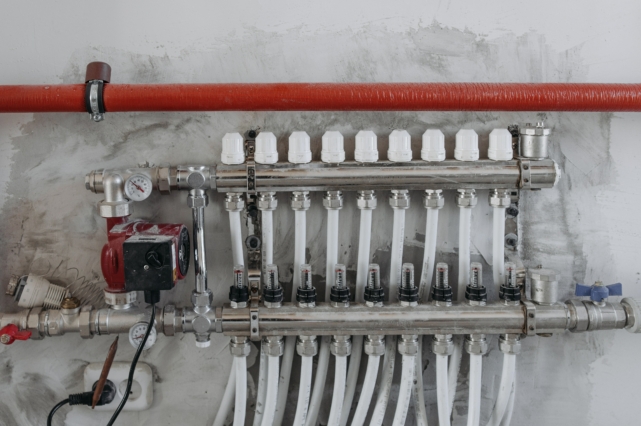
How to Choose the Right Plumbing Pipes for Your Home
Every healthy home needs to have a couple of things: a well-made roof, proper wiring, and adequate plumbing. We are pretty familiar with the importance of these things, but there still isn’t an easy way to make the right choice. After all, each home has its own problems. Therefore not all solutions are feasible for every home. In this article, we go over the different plumbing options you’ll have available and give you a basic understanding of their pros and cons. This should help you choose the right plumbing pipes for your home.
What options are available
The following are the most commonly available options in the U.S. If you live in a different country or a remote area of the U.S., some of these options might not be available. Or you may have other options that we haven’t covered in this article. In any case, we strongly recommend that you carefully consult with a seasoned local plumber before you make your choice.
Stainless steel
When it comes to piping options, stainless steel is the Rolls Royse. It is sturdy, flexible, resistant to corrosion, and quite dependable. The only major downside is that it is expensive. Because of this, stainless steel is usually reserved for vulnerable areas of plumbing where insulation is difficult to place. It is also worth remembering that stainless steel pipes require special coupling for attachment to other pipes. Therefore, while they can be useful, they can be a bother to install.
PEX
PEX is quite popular in residential and commercial use (particularly small businesses). This type of plastic plumbing is fairly easy to install and maintain, making it a dream for DIY installation. While it does carry a higher initial cost, it is well worth the investment in the long run. Furthermore, you will have a relatively easy time installing and maintaining it. But it is essential to note that PEX piping is only suitable indoors. Outdoor application is out of the question due to UV rays that can damage the outer layer.
Copper
When it comes to home piping, copper is the most traditional option. The best thing about copper is that it is durable and highly resistant to corrosion, making it an ideal piping material. It is also resistant to extreme temperatures and temperature fluctuations, giving it potential for widespread use. But copper can be a bit of a drag when it comes to installation. Copper pipes are soldered together, which means that DIY installation is out of the question. If you want to combine it with other types of piping, you will need to use additional fittings.
PVC
PVC pipes come in a variety of thicknesses and configurations. As such, you can use them for pretty much any plumbing need. Depending on the type, they can be relatively cheap and easy to install. But the potential downside is that they are not the most durable. Don’t get us wrong, though. High-quality PVC pipes can last you 70 years or more. But those can be costly and will likely require expert installation. Some people don’t like the look of PVC, as plastic is usually associated with something being cheap. Therefore, while PVC has a wide application, people don’t usually use it as a permanent solution.
Galvanized
Not long ago, Galvanized pipes were the norm in residential homes. But, as plumbing technology advanced, we strayed further and further away from them. The main problem with these pipes is rust. Namely, it tends to build up inside, while the pipes themselves have a relatively small diameter. This may not only lower your water pressure but also cause rust to come out with the water. This is why plumbers usually advise people away from Galvanized pipes, even if they are a traditional, relatively cheap option.
Brass
Brass is composed of copper and zinc. Therefore, it carries most of the advantages that copper pipes have. Seeing that brass piping contains either 67% or 85% copper, it is essentially rustproof. Furthermore, it is sturdy, easy to install, and fairly easy to maintain. Brass piping is a long (if not the longest) lasting type of plumbing as it doesn’t accumulate rust, nor does it have friction issues inside the pipe. Because they are pretty easy to thread, brass piping is better than the steal for hot-water distribution, pump fittings, walls, and water tanks.
Cast Iron Pipes
When it comes to heavy-duty plumbing, cast iron pipes are the go-to choice. In most large buildings, you can find the bell and spigot type. However, no-hub casting is also available. The thing to remember about cast iron pipes is that they are the heaviest option, by far. Therefore, they find their primary use in underground installation, for the main pipe or your drainage.
What to do after you choose the right plumbing pipes for your home
Before we finish, it is essential to note that to have a good plumbing system, you need to do more than choose the right plumbing. It is paramount that you find a good plumber and help them install your plumbing with as much ease as possible. Once you decide on what system you will install (or reinstall), you need to get extra stuff out of the way (in a storage unit, for example) and provide enough room for efficient installation. Know that your plumbing won’t be any good unless it is properly installed.
When it comes to looking for plumbers for installation, we suggest that you focus on local professionals. They tend to have the best knowledge of which system is the most cost-effective for the local area. If not, they know which plumbing option is the most popular with your neighbors, which is always a good guess. So, keep in mind that a good plumber can be of great help when you need to choose the right plumbing pipes for your home.